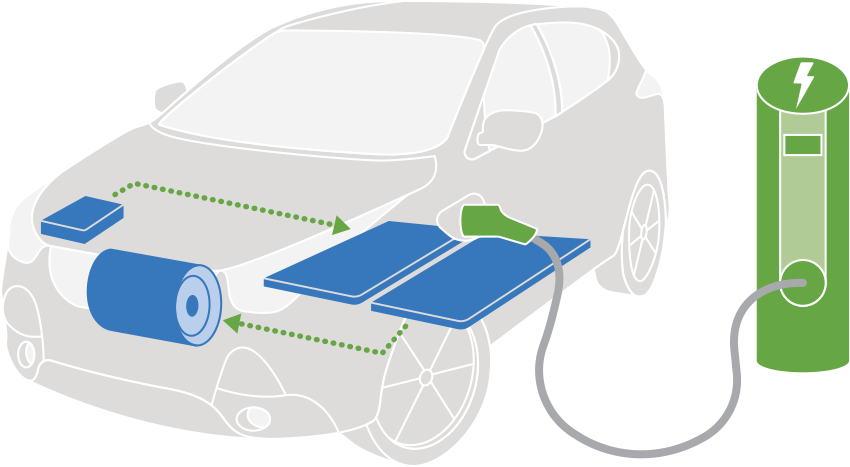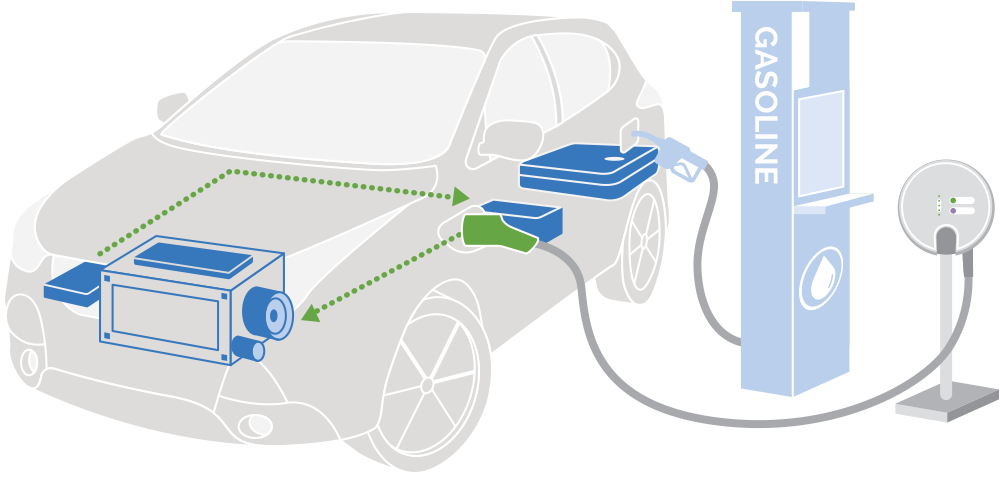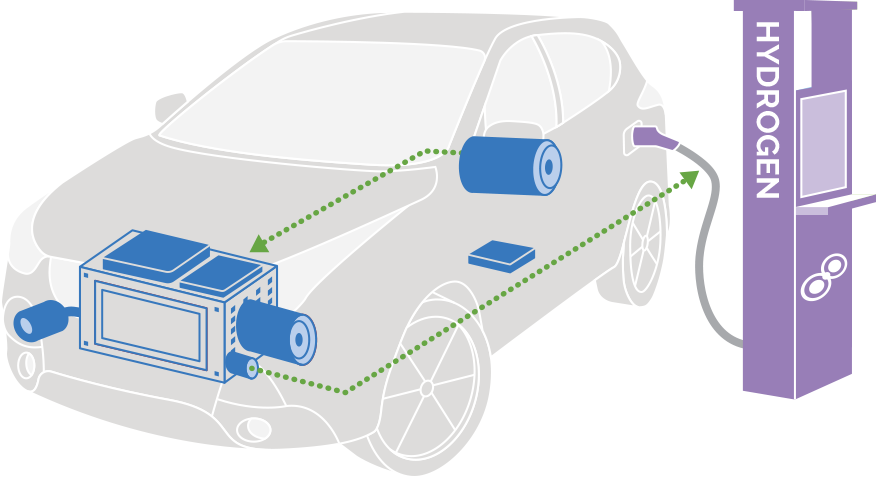Electric Vehicle Basics
You see them in the highway carpool lane, charging up at grocery stores and zipping along busy city streets! Over the last decade, demand for electric vehicles (EVs) has dramatically increased as more and more drivers discover that EVs provide a new, exciting driving experience with benefits that gas-powered cars simply can’t offer. The number of electric vehicles is on the rise with more makes and models hitting the market to meet every unique driving needs. Scroll on to learn EVs basics!
What are the types of electric vehicles?
There are three main types of electric vehicles: Battery electric vehicles (BEVs), plug-in hybrid electric vehicles (PHEVs) and fuel cell electric vehicles (FCEVs). Learn more about what each EV type entails below.

Battery-Electric Vehicles
Battery-electric vehicles (BEVs) — also sometimes referred to as all-electric vehicles — use zero gasoline. Instead, they run on a large battery that fully powers electric motors to achieve driving ranges up to nearly 300 miles, with newer models continuing to boast higher and higher driving ranges as battery technology advances. In addition to never needing gas, BEVs also require less maintenance since they have significantly fewer moving parts than a gas-powered vehicle.
One benefit of battery-electric vehicles over plug-in hybrid electric vehicles is BEVs capability to use DC fast chargers, which provide more than 100 miles of range in 30 minutes.

Plug-In Hybrid Electric Vehicles
Plug-in hybrid electric vehicles (PHEVs) offer both gas-powered and electric-powered driving options. With smaller batteries than BEVs, PHEVS can achieve a pure electric-powered driving range of 20 – 55 miles, during which they produce no tailpipe emissions. When the PHEV uses up its electric range, it switches to gas and drives just like a conventional gas car.
Because most drivers’ daily commute is under 30 miles, the majority of driving in a plug-in hybrid can be done in electric-only mode.

Fuel Cell Electric Vehicles
Fuel cell electric vehicles (FCEVs) also run on electricity, however they do so a bit differently than batter-electric vehicles or plug-in hybrid electric vehicles. FCEVs power system is composed of numerous “fuel cells” that chemically combine hydrogen gas from the vehicle’s tank with oxygen from the air to produce electricity. FCEVs have all of the perks of an electric vehicle, including a smooth, quiet ride, incentives and are eligible for the carpool lane decal to help you hop in the fast lane.
FCEVs boast a driving range of 300 – 400 miles on a full tank and can be refueled in about five minutes at public hydrogen fueling stations, which are becoming increasingly common in California. An additional benefit for fuel cell drivers is that auto manufacturers provide three years worth of free hydrogen fuel.
Thank you to the California Air Resources Board for their contributions to this section.





